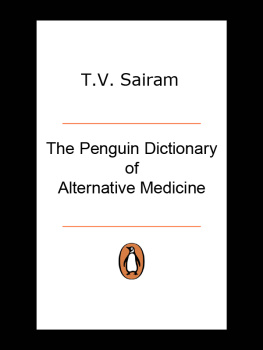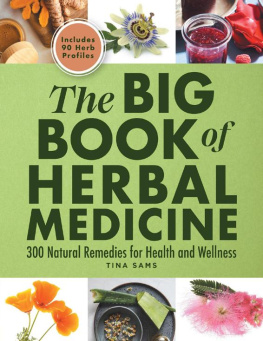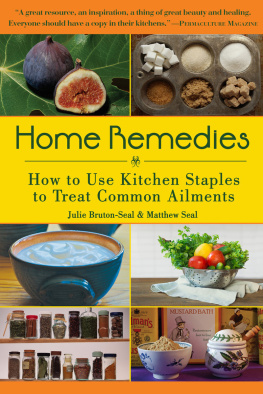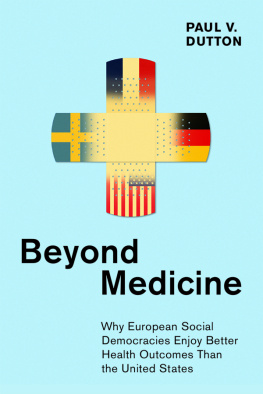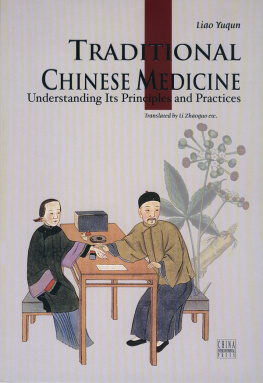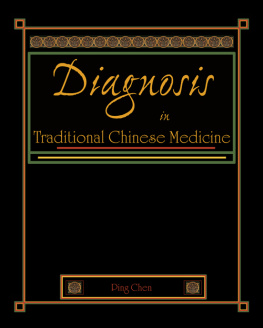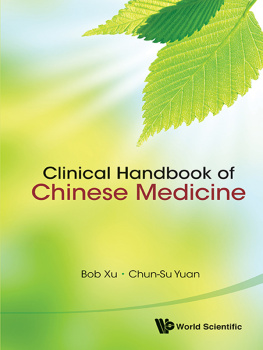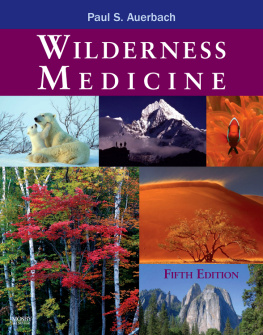Paul Joseph Thottam - SIDDHA MEDICINE HANDBOOK OF TRADITIONAL REMEDIES
Here you can read online Paul Joseph Thottam - SIDDHA MEDICINE HANDBOOK OF TRADITIONAL REMEDIES full text of the book (entire story) in english for free. Download pdf and epub, get meaning, cover and reviews about this ebook. year: 2012, publisher: Thottam Pub;isher, genre: Religion. Description of the work, (preface) as well as reviews are available. Best literature library LitArk.com created for fans of good reading and offers a wide selection of genres:
Romance novel
Science fiction
Adventure
Detective
Science
History
Home and family
Prose
Art
Politics
Computer
Non-fiction
Religion
Business
Children
Humor
Choose a favorite category and find really read worthwhile books. Enjoy immersion in the world of imagination, feel the emotions of the characters or learn something new for yourself, make an fascinating discovery.

- Book:SIDDHA MEDICINE HANDBOOK OF TRADITIONAL REMEDIES
- Author:
- Publisher:Thottam Pub;isher
- Genre:
- Year:2012
- Rating:5 / 5
- Favourites:Add to favourites
- Your mark:
- 100
- 1
- 2
- 3
- 4
- 5
SIDDHA MEDICINE HANDBOOK OF TRADITIONAL REMEDIES: summary, description and annotation
We offer to read an annotation, description, summary or preface (depends on what the author of the book "SIDDHA MEDICINE HANDBOOK OF TRADITIONAL REMEDIES" wrote himself). If you haven't found the necessary information about the book — write in the comments, we will try to find it.
SIDDHA MEDICINE HANDBOOK OF TRADITIONAL REMEDIES — read online for free the complete book (whole text) full work
Below is the text of the book, divided by pages. System saving the place of the last page read, allows you to conveniently read the book "SIDDHA MEDICINE HANDBOOK OF TRADITIONAL REMEDIES" online for free, without having to search again every time where you left off. Put a bookmark, and you can go to the page where you finished reading at any time.
Font size:
Interval:
Bookmark:


SIDDHA MEDICINE
THOTTAM Dr. PAUL JOSEPH, graduated from Madras University in 1959 and was registered with the Central Board of Indian Medicine, New Delhi, in 1974 after passing the examination for traditional practitioners of Siddha Medicine.
He has been a member of the Central Council for Research in Ayurveda and Siddha, New Delhi Since 1987.
He is the founder of the THOTTAM Pharmaceutical & Vaidyasalai, the Company manufacturing Siddha medicine.
SIDDHA MEDICINE
THOTTAM Dr. PAUL JOSEPH
KDP Author Id: 2016494
ISBN 978 81 909062 1 0
THOTTAM PUBLISHER
CHENNAI 600106
INDIA
First published by Penguin Book India 2000
Second Published by Thottam Publisher 2010
Copyright Thottam Dr Paul Joseph
While every effort has been made to verify the authenticity of the information contained in the book, it is not intended as a substitute for medical consultation with a physician. The publisher and author are in no way liable for the use of the information contained in the book.
This book is sold subject to the condition that it shall not, by way of trade or otherwise, be lent, resold, hired out or otherwise circulated without the publishers prior written consent in any form of binding or cover other than that in which it is published, and without a similar condition including this condition being imposed on the subsequent purchaser and without limiting the rights under the copyright reserved above, no part of the publication may be reproduced, stored in or introduced into a retrieval system, or transmitted in any form or by any means (electronic, mechanical, photocopying recording or otherwise) without the prior written permission of both the copyright owner and the publisher of the book.
SIDDHA MEDICINES OF THE TAMILS
INTRODUCTION
Many friends of mine have been asking me to write a book on Siddha Medicine, but I have been diffident all these years. The main reason being that, it is a very time consuming job and my present work schedule permits me very little leisure. However as there little or no literature on Siddha Medicine in ENGLISH, I have undertaken the responsibility of attempting to write a book on the different aspects of Siddha Medicine, in english.
It is also my endeavour to try and interpret many siddha terms like Vada, Pitta and Kabha in respect to modern concepts. These may not be acceptable to all at present, but I feel they will understand what I am trying to get at and perhaps lead some readers to do more research to either prove me wrong or right. Either way, my aim and desire to stimulate the interest of the reader is achieved.
On speaking of the different aspects of Siddha Medicine, I wish to point out that anyone who wants to know about Siddha Medicine should also be given a brief account of the historical, political and religious influences that Siddha medicine experienced over the centuries. So that they would understand the philosophy of Siddha Medicine. This is very important. There is a big controversy over the Siddhars or (Saints) who contributed to the establishment of this system of medical sciences. Although it is generally believed that eighteen siddhars created the Siddha system of medicine, in reality there are at least twenty to twenty five siddhars as per the text Bogar 7000, a very rare text. The names are as given below:-
1.Agathiar 2. Roma Rishi 3.Kalangi Nather
4. Bogar 5.Macha Muni 6.Satta Muni
7.Edaikadar 8.Thirumoolar 9. Sivavakkiar
10.Rama Devar 11.Bhujandar 12.Karuvoorar
13.Pulathiar 14.Theyraiar 15.Konganar
16.Korakkar 17.Agaipai Siddar
18.Pampatti 19.Yugi Muni
Their life span and the period when they existed is again speculative. However to solve this problem I am relying on historical facts, contemporary texts, and literature to authentic my theories .
Another important aspect of Siddha Medicine are the various therapeutic approaches that work together to promote a holistic healing. It will be my endeavour to try and explain each and every procedure, both from the traditional angles as well as from the modern stand point of view . While modern therapeutics include the oral form of medicine and the parental therapy, which covers various forms of drugs like tablets, capsules, liquids etc., although powders are not now in vogue. In the parental form of therapy we have intra muscular and intraveneous types of injections. Physiotherapy is a relatively new addition to modern medicine. On the contrary in traditional medicine oral therapy included powders encapsulated and non-encapsulated, herbal juices either raw or cooked, and at times fermented juices. There has been a very basic form of intramuscular therapy in Siddha Medicine known as keerikattal which means scratch and apply a herbal paste. This will be dealt with in the relevant chapter. Ancient Siddha physicians believed that anointing medicated oil was a form of therapy and used it with good results.
Bone setting is a fine art, developed by our ancients. Both in every day life and at war, fractures occurred which had to be treated. The good health of the Tamils are standing example of its fine medical history. Surgery too was practiced but it cannot be compared with modern day medical texts, although some claims are being made by over zealous members of this profession.
Another form of therapy for head aches etc., is the Naseeyam, which means instilling a medicine into the nostrils of patient. This form is popular where the patient is unconscious, as in snake bits, or in mental disorder, where the patient is uncooperative. Another popular form of therapy is to stagnate medicated oil on the head for a certain duration. This helps in disorder like mental conditions, head ache, paralysis etc., Each of these procedures will be dealt in the ensuing chapters.
Yet another popular therapy and very common among the affluent is the massage therapy. Sometimes in addition to the medicated oil, a bolus of nutrients or herbs is rolled, dipped into medicated oil and used for formentation. This is yet an another variation of the massage therapy and is used where massages are contraindicated.
In the past leaches were used for blood letting but for various reason this form of therapy is no longer in vogue. At this juncture am forced to point out that in the traditional forms of medicine, both Ayurveda and Siddha have included heavy metals in many of their formulations. These drugs have to be used with caution and only in very special conditions where other drugs have failed. Secondly the mandatory regulations of Siddha Medicine have ordered analytical tests on such drugs knowing fully well the dangers of faulty preparation. Nowadays these drugs are not encouraged.
There is also an unique form of medicine which is different from tablets and injectables. This is called Kattu.
The Kattu can be considered the fore runner to Homeopathy. The Kattu is a stone like medicinal product. Usually made up of Arsenic or mercurial salt or any heavy metal treated with herbs and baked into hardness. When the patient does not respond to normal treatment then the Kattu is scrapped once or twice on a special stone and wash with herbs, honey, milk or any suitable fluid medium and given to the patient. By this process it is very clear that only micro doses of the medicine, that could be measured in ppm, is administered to the patient, Thereby ensuring safety and being effective at the same time.
Next pageFont size:
Interval:
Bookmark:
Similar books «SIDDHA MEDICINE HANDBOOK OF TRADITIONAL REMEDIES»
Look at similar books to SIDDHA MEDICINE HANDBOOK OF TRADITIONAL REMEDIES. We have selected literature similar in name and meaning in the hope of providing readers with more options to find new, interesting, not yet read works.
Discussion, reviews of the book SIDDHA MEDICINE HANDBOOK OF TRADITIONAL REMEDIES and just readers' own opinions. Leave your comments, write what you think about the work, its meaning or the main characters. Specify what exactly you liked and what you didn't like, and why you think so.

